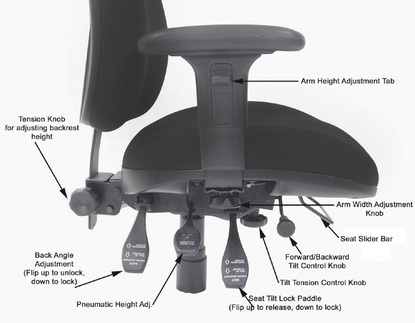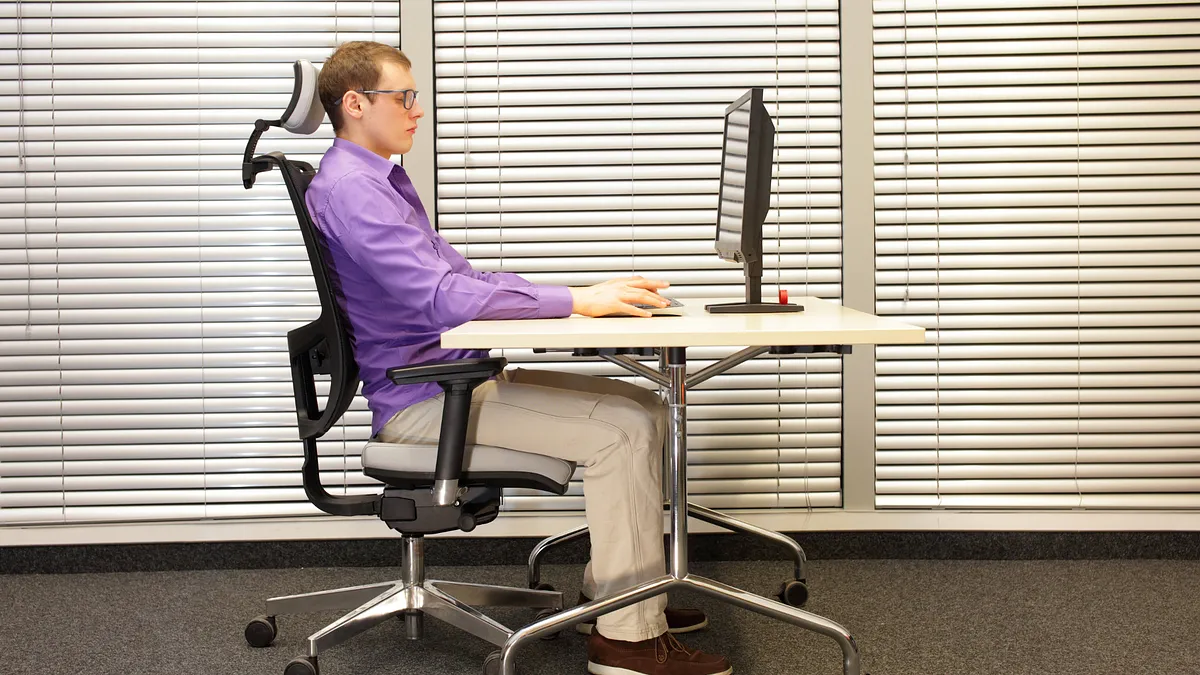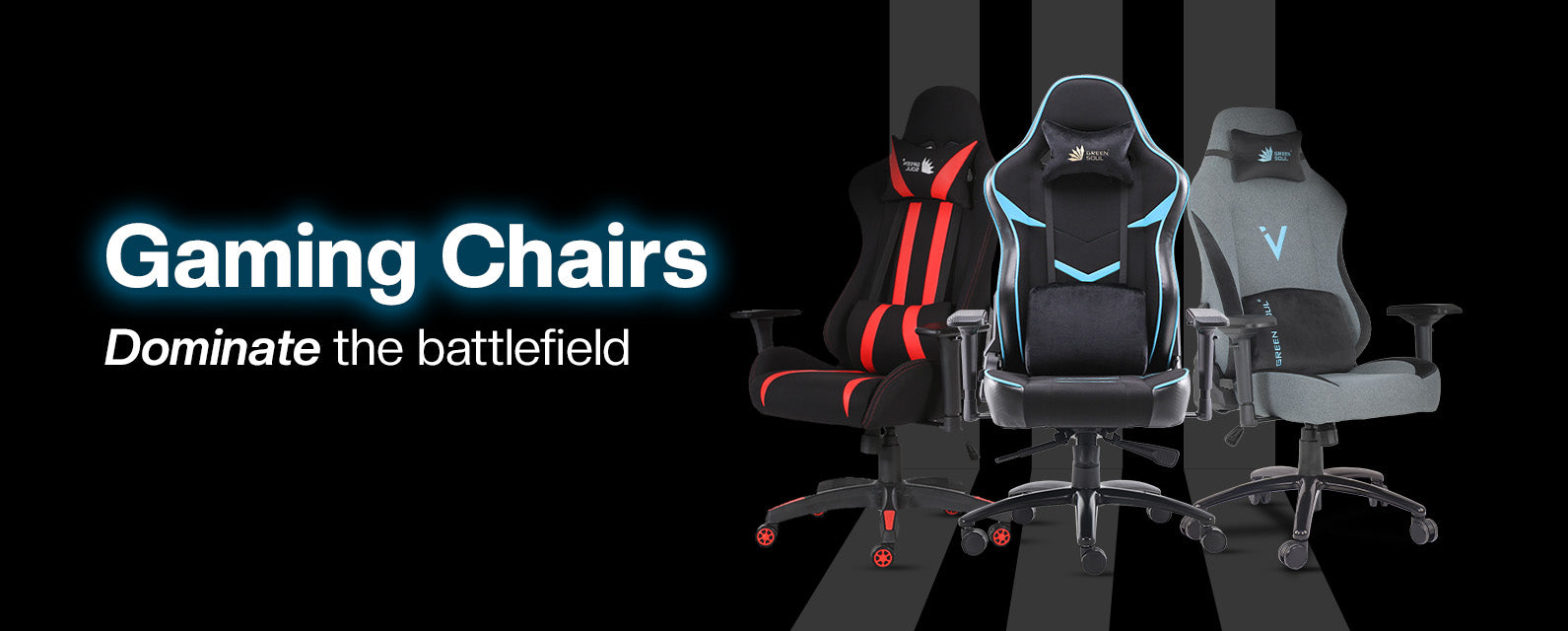Gaming chairs are an essential part of any serious gamer’s setup, providing comfort and support during long gaming sessions. However, one common issue that can plague even the best gaming chairs is wobbly arms. This frustrating problem can not only disrupt your gaming experience but also compromise the overall stability and longevity of your chair. In this comprehensive guide, we’ll explore the causes of wobbly arms in gaming chairs and provide you with a variety of solutions to fix the issue, ranging from simple adjustments to more creative DIY approaches.
Understanding the Root Causes of Wobbly Arms

Before diving into the solutions, it’s crucial to understand why gaming chair arms become wobbly in the first place. This knowledge will not only help you fix the current issue but also prevent it from recurring in the future.
Wobbly arms in gaming chairs can be attributed to several factors, each requiring a different approach to resolve. Let’s explore the most common causes and their implications for your gaming chair’s stability and comfort.
Loose Bolts and Screws
One of the primary culprits behind wobbly arms is the loosening of bolts and screws that connect the armrests to the chair’s frame. Over time, the vibrations and movements associated with regular use can cause these fasteners to gradually loosen.
This loosening process is often gradual, which is why many gamers don’t notice the problem until it becomes significant. The constant adjustments and pressure applied to the armrests during gaming sessions can accelerate this process, especially if the chair is frequently moved or repositioned.
To identify loose bolts and screws, perform a thorough inspection of your chair, paying close attention to the points where the armrests connect to the main body. Gently wiggle the armrests to feel for any unusual movement or rattling sounds, which are telltale signs of loose connections.
Wear and Tear of Components
Another common cause of wobbly arms is the natural wear and tear of the chair’s components. This is particularly true for the moving parts within the armrest mechanisms, such as height adjustment systems or pivot points.
Over time, these components can degrade due to friction, leading to increased play in the armrest’s movement. This wear can manifest as a slight wobble that gradually worsens as the components continue to deteriorate.
The quality of materials used in the chair’s construction plays a significant role in how quickly wear and tear occurs. Higher-end gaming chairs often use more durable materials that can withstand prolonged use, while budget options may be more susceptible to early signs of wear.
Misalignment Issues
Sometimes, the wobbling of armrests can be attributed to misalignment issues. This can occur if the chair has been subjected to significant impacts or if it was improperly assembled from the start.
Misalignment can cause uneven pressure distribution across the armrest’s connection points, leading to instability and wobbling. In some cases, this misalignment may be barely noticeable to the naked eye but can still have a significant impact on the armrest’s stability.
To check for misalignment, carefully examine the armrests from different angles, looking for any signs of unevenness or gaps between connecting parts. Pay attention to how the armrests sit in relation to the chair’s frame and seat.
Essential Tools and Materials for Fixing Wobbly Arms

Before embarking on your repair journey, it’s important to gather the necessary tools and materials. Having everything at hand will make the process smoother and more efficient, allowing you to focus on fixing your gaming chair without interruptions.
Let’s explore the essential items you’ll need and why they’re important for addressing wobbly arms in your gaming chair.
Basic Tool Kit
A well-equipped basic tool kit is the foundation of any successful repair job. For fixing wobbly gaming chair arms, you’ll want to include the following tools:
Screwdrivers: A set of flathead and Phillips head screwdrivers in various sizes is essential. Many gaming chairs use different screw types for different components, so having a variety ensures you’re prepared for any fastener you encounter.
Allen wrenches (hex keys): These are crucial for tightening or loosening hexagonal socket screws, which are common in gaming chair construction. A set of metric and imperial sizes will cover most needs.
Pliers: Both needle-nose and adjustable pliers can be helpful for gripping small parts or holding components in place while you work on them.
Adjustable wrench: This versatile tool can handle various nut and bolt sizes, making it invaluable for tightening connections.
Having these tools readily available will save you time and frustration during the repair process. It’s worth investing in quality tools that will last, as they can be used for future maintenance and repairs on your gaming chair and other furniture.
Replacement Hardware
Sometimes, the existing hardware on your gaming chair may be too worn or damaged to provide a reliable fix. In these cases, having replacement parts on hand can be a game-changer. Consider stocking up on:
Assorted screws and bolts: A variety of sizes and types (e.g., machine screws, wood screws) that match those commonly used in gaming chairs.
Washers and lock washers: These can help distribute pressure and prevent loosening over time.
Nuts: Both standard and lock nuts can be useful for securing bolts in place.
When selecting replacement hardware, try to match the original components as closely as possible in terms of size, thread type, and material. If you’re unsure, take a sample of the original hardware to a hardware store for assistance in finding suitable replacements.
Optional Materials for Creative Solutions
For those willing to explore more creative fixes or customizations, consider having these additional materials on hand:
Foam padding or rubber grommets: These can be used to fill gaps or dampen vibrations that contribute to wobbling.
Fabric or leather patches: Useful for covering worn areas or adding a personal touch to your chair’s appearance.
Strong adhesives: High-quality epoxy or specialized furniture adhesives can be helpful for reinforcing connections or attaching custom components.
While these materials may not be necessary for basic repairs, they open up possibilities for more comprehensive solutions and personalized modifications to your gaming chair.
Step-by-Step Guide to Fixing Wobbly Arms

Now that we understand the causes of wobbly arms and have gathered the necessary tools and materials, it’s time to dive into the repair process. This step-by-step guide will walk you through various methods to address the issue, starting with the simplest solutions and progressing to more involved repairs.
Tightening Loose Connections
The first and often most effective step in fixing wobbly arms is to tighten any loose connections. This simple process can resolve many wobbling issues and should always be your starting point.
Begin by flipping your gaming chair over or positioning it in a way that gives you easy access to the underside of the armrests. Locate all visible screws, bolts, and other fasteners that connect the armrests to the chair’s frame.
Using the appropriate screwdriver or wrench, carefully tighten each fastener. Be cautious not to over-tighten, as this can strip the threads or damage the chair’s components. Aim for a snug fit that allows for normal movement of adjustable parts.
As you tighten each connection, test the armrest for stability. Often, you’ll notice an immediate improvement in the arm’s steadiness. If you encounter any stripped or damaged fasteners during this process, make a note to replace them in the next step.
After tightening all connections, return the chair to its upright position and test both armrests thoroughly. If the wobbling persists, move on to the next method.
Replacing Worn Hardware
If tightening alone doesn’t solve the problem, it may be necessary to replace worn or damaged hardware. This step is particularly important if you noticed any stripped screws or elongated bolt holes during the tightening process.
Start by removing the problematic fasteners. If a screw is stripped, you may need to use a screw extractor tool or seek professional help to remove it without causing further damage.
Once the old hardware is removed, clean the area thoroughly to remove any debris or old adhesive. This ensures a clean surface for the new components to grip.
Select replacement hardware that matches the originals in terms of size, thread type, and length. If possible, opt for slightly larger diameter screws or bolts to provide a tighter fit in worn holes.
When installing the new hardware, consider using lock washers or thread-locking adhesive to prevent future loosening. These additional measures can significantly extend the time between necessary adjustments.
After replacing the hardware, reassemble the armrest and test it for stability. If you’ve addressed all worn components, you should notice a marked improvement in the armrest’s steadiness.
Addressing Misalignment Issues
Sometimes, wobbly arms are caused by misalignment rather than loose or worn hardware. Addressing this issue requires a more nuanced approach and may involve some trial and error.
Begin by carefully examining the armrest’s connection points. Look for any gaps or uneven spacing between the armrest and the chair’s frame. These visual cues can help you identify where the misalignment is occurring.
If you notice a gap, you may need to add shims or spacers to create a more even fit. Thin pieces of plastic or metal can be used as shims. Place them strategically to fill any gaps and create a more stable connection.
For armrests that seem to be sitting at an angle, you may need to loosen all connecting hardware and realign the entire armrest assembly. Once you’ve achieved proper alignment, carefully tighten all fasteners, starting from the center and working your way outward to maintain the correct position.
In some cases, misalignment may be due to warped or damaged components. If this is the case, you may need to consider replacing the affected parts or seeking professional repair services.
Advanced Techniques for Persistent Wobbles

If the basic fixes haven’t fully resolved your wobbly arm issues, it’s time to explore some more advanced techniques. These methods require a bit more skill and creativity but can provide long-lasting solutions for even the most stubborn wobbles.
Reinforcing Armrest Connections
One effective way to address persistent wobbling is to reinforce the connection points between the armrests and the chair’s frame. This technique can add significant stability to your gaming chair’s arms.
Start by removing the armrest completely to gain full access to its mounting points. Inspect the area for any signs of wear or damage that may not have been visible before.
Consider adding additional support brackets or metal plates to strengthen the connection. These can be custom-made or adapted from existing hardware store components. Ensure that any additions don’t interfere with the chair’s adjustability features.
When reattaching the armrest, use larger, higher-grade bolts if possible. Combine these with lock washers and nylock nuts for maximum security. Apply a small amount of thread-locking compound to prevent future loosening.
If your chair’s design allows, consider drilling additional mounting holes to create a more secure connection. Be cautious when doing this, as it may void your warranty and requires precision to avoid damaging the chair’s structure.
After reinforcing the connections, reassemble the armrest and test it thoroughly. The added support should result in a noticeably more stable armrest.
Modifying Armrest Mechanisms
For chairs with complex armrest adjustment mechanisms, the source of wobbling may lie within these components. Modifying or upgrading these mechanisms can lead to improved stability.
Begin by disassembling the armrest mechanism carefully, taking note of how each part fits together. Look for worn bearings, loose pivot points, or damaged plastic components.
Consider replacing plastic parts with metal alternatives where possible. This can significantly increase durability and reduce play in moving parts. Custom-machined components may be necessary for a perfect fit.
If the mechanism uses a ratchet system for height adjustment, examine the teeth for wear. Damaged teeth can cause instability. Either replace the ratchet component or consider filling worn areas with a durable epoxy to restore proper function.
For pivot points, adding tension springs or friction washers can reduce unwanted movement while still allowing for adjustability. Experiment with different levels of tension to find the right balance between stability and ease of adjustment.
Reassemble the mechanism, applying high-quality lubricant to moving parts to ensure smooth operation. Test the armrest thoroughly, making any fine adjustments as needed.
Custom Fabrication Solutions
For those with access to tools and materials for custom fabrication, creating bespoke solutions can address even the most challenging wobble issues.
Consider designing and fabricating custom armrest brackets that provide more substantial support than the original components. This may involve using thicker metal or incorporating additional reinforcement points.
3D printing can be an excellent option for creating custom parts that perfectly fit your chair’s specific design. This is particularly useful for replacing plastic components that may have degraded over time.
If your chair’s arms are attached to the backrest, consider fabricating a support that connects the armrest directly to the seat base. This can dramatically increase stability, especially for chairs with reclining features.
For wooden components, skilled woodworking can be employed to create custom-fitted inserts or entirely new armrest bases. This allows for a perfect match to your chair’s aesthetics while addressing stability issues.
When implementing custom solutions, always prioritize safety and ensure that your modifications don’t compromise the chair’s structural integrity or ergonomic design.
Preventive Maintenance and Long-Term Care

While fixing wobbly arms is important, preventing the issue from recurring is equally crucial. Implementing a regular maintenance routine and adopting proper usage habits can significantly extend the life of your gaming chair and keep those arms steady for years to come.
Let’s explore some effective strategies for preventive maintenance and long-term care of your gaming chair’s arms.
Regular Inspection and Tightening
One of the simplest yet most effective preventive measures is to perform regular inspections of your gaming chair, paying particular attention to the armrests.
Set a reminder to check your chair’s arms every few months, or more frequently if you use it heavily. During these inspections, gently test each armrest for any signs of wobbling or unusual movement.
Use this opportunity to tighten any loose screws or bolts you find. Remember to use the appropriate tools and avoid over-tightening, which can damage the components.
Pay attention to any unusual sounds, such as creaking or clicking, when moving the armrests. These can be early indicators of developing issues that should be addressed promptly.
By catching and addressing minor issues early, you can prevent them from escalating into more significant problems that require extensive repairs.
Proper Usage and Weight Distribution
How you use your gaming chair can have a significant impact on the longevity of its components, including the armrests.
Avoid putting excessive weight on the armrests, such as using them to support your full body weight when getting in or out of the chair. While they’re designed to support your arms, they’re not meant to bear your entire body weight.
When adjusting the armrests, do so gently and avoid forcing them if they meet resistance. If an adjustment mechanism feels stuck, investigate the cause rather than applying more force, which could lead to damage.
Try to distribute your weight evenly when seated, and avoid leaning heavily to one side for extended periods. This can put undue stress on one armrest, potentially leading to wobbling over time.
If your chair has a reclining feature, be mindful of how this affects weight distribution on the armrests. Some positions may put more strain on the arms than others.
Lubrication and Cleaning
Proper lubrication of moving parts can significantly reduce wear and tear, helping to prevent wobbling issues before they start.
Identify all pivot points and adjustable mechanisms in the armrests. These are the areas that will benefit most from regular lubrication.
Use a high-quality, silicone-based lubricant or one specifically recommended by your chair’s manufacturer. Apply it sparingly to avoid attracting dust and debris.
Before applying lubricant, clean the area thoroughly to remove any built-up dirt or old lubricant. This ensures that the new lubricant can penetrate effectively.
In addition to lubrication, regular cleaning of your entire chair, including the armrests, can prevent the buildup of grime that might interfere with proper function.
Use a mild cleaning solution and a soft cloth to wipe down the armrests, paying attention to crevices and joints where dirt can accumulate.
For fabric-covered armrests, vacuuming regularly can prevent dirt from working its way into the mechanisms underneath.
Adjusting Usage Patterns
Sometimes, preventing wobble issues is as simple as adjusting how you interact with your chair’s armrests.
If you find yourself frequently leaning on one armrest more than the other, try to consciously distribute your weight more evenly. This may require adjusting your sitting posture or desk setup.
Consider alternating between using and not using the armrests during long gaming sessions. This can reduce wear on specific points and promote better overall posture.
If your chair allows for it, try adjusting the armrest positions regularly. This can help distribute wear more evenly across the adjustment mechanisms.
Be mindful of any habits that might be putting undue stress on the armrests, such as using them to pull the chair closer to your desk. Finding alternative ways to make these adjustments can reduce strain on the armrest components.
Conclusion
Wobbly arms on a gaming chair can be a frustrating issue, but with the right knowledge and tools, it’s a problem that can be effectively addressed. From simple tightening of loose connections to more advanced reinforcement techniques, this guide has provided a comprehensive overview of how to fix gaming chair wobbly arms.
Remember that prevention is often the best cure. Regular maintenance, proper usage habits, and timely attention to minor issues can go a long way in ensuring your gaming chair remains stable and comfortable for years to come. By implementing the strategies outlined in this guide, you can enjoy uninterrupted gaming sessions without the distraction of unstable armrests.
Whether you’re a casual gamer or a professional esports athlete, a stable and comfortable chair is essential for your gaming experience an
